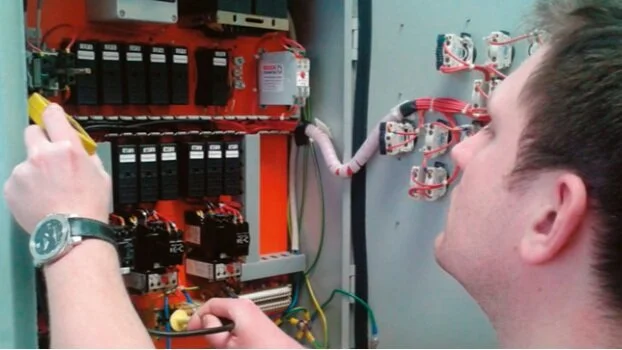Six Step Approach to Fault Finding
During the course of assessing more than 1,000 candidates over a 15 year period, MCP has found fault finding to be the second biggest weakness in maintenance trade tests. Here, John Saysell, Head of Business Development and Technical Training at MCP Consulting Group, explains his Six-Step Approach to Fault Finding.
Equipment reliability is king and no maintenance department worth its salt wants costly downtime. To help technicians get to the cause of a fault faster, MCP has developed a course focusing on a logical approach to fault finding. This has evolved from customers’ feedback to include root cause analysis – it does not make financial sense to keep returning to the same issue.
What are the six key steps to approach electrical fault finding?
Here are six key points to consider:
1. Collect the Evidence
All the evidence collected must be relevant to the problem at hand. If one is in doubt as to whether anything is relevant, then include it. Reject it afterwards at the first opportunity if it clearly is not relevant. The quantity of information collected is unimportant, what matters is that all information collected is relevant. Observe the system running, if you consider it safe to do so. Use all your senses: smell (burning), hearing (vibration), touch (temperature), sight (for unusual conditions). Refer to any relevant documentation.
2. Analyse the Evidence
Consider all the evidence collected and, if possible, reject any which after further careful consideration is not relevant. Study the hardcore of relevant evidence and – through the process of careful, logical thinking –diagnose the likely fault or at least the area or region of the fault.
3. Locate the Fault
In a sense, this is a continuation of the process of ‘analysis’. The areas or regions are systematically reduced in size until a specific part can be identified as being faulty. For example, if a doorbell does not ring when it should, it is only by means of a systematic approach that one determines that the bell itself is faulty.
4. Determination and Removal of the Cause
If the cause of a fault is not removed, the fault will recur even though the fault has been rectified. For instance, a flat bicycle tyre might be the result of a puncture (the fault) in the inner tube. If the puncture is repaired (i.e. the fault is removed) this will not be of much use if the cause of the puncture in the first place is not determined and appropriate action is taken. The cause of the puncture may be a nail that has penetrated the outer cover. This must be removed.
5. Rectification of the Fault
This may be a simple task, as in the case referred to above, or it may be a much bigger one. Whatever is the case, it is a specific task based on earlier findings.
6. Check the System
It is important to ensure that the machine, equipment or system is functioning normally after the cause of the fault and the fault itself has been dealt with. In the case of the puncture, it is easy to confirm that the cause of the fault – and the fault itself – has indeed been dealt with satisfactorily, assuming that the tyre remains inflated. With more sophisticated equipment or systems, it may necessary to ‘fine-tune’ the system in order to return it to optimum working conditions.
How can I improve my fault finding techniques?
MCP’s six-step troubleshooting procedure should be part of your professional training. Our courses have been delivered across the UK and around the world.
















Prices Quoted Exclude VAT
Course Type | Electrical, Technical Skills
Certificate | MCP Training Certificate
Duration of Course | 4 Days
Location | Reading or Solihull